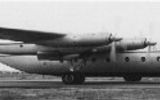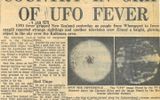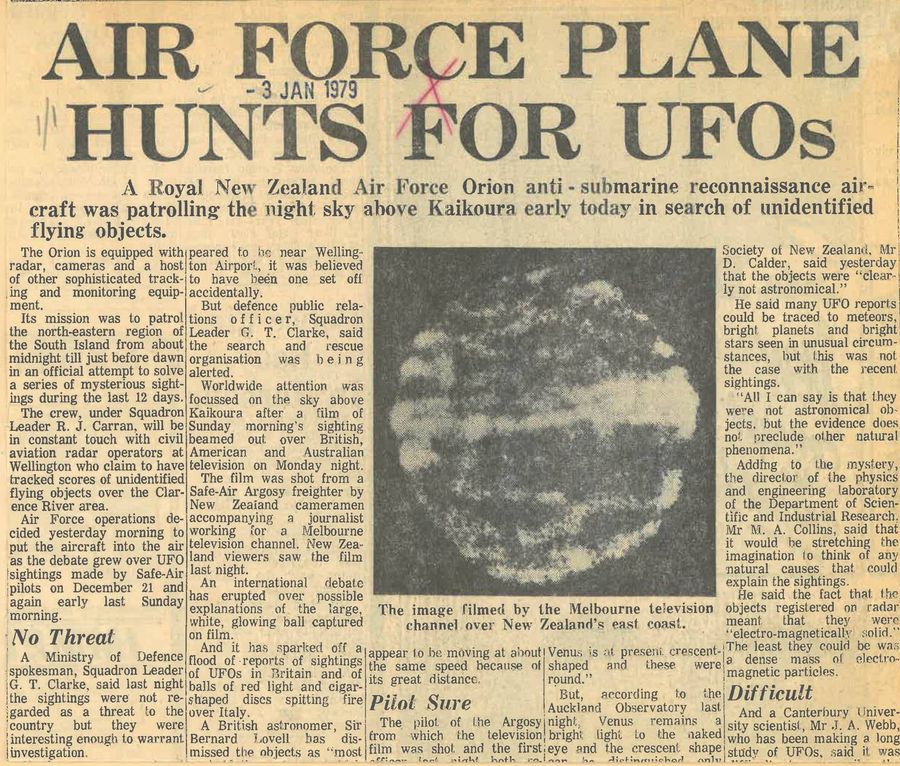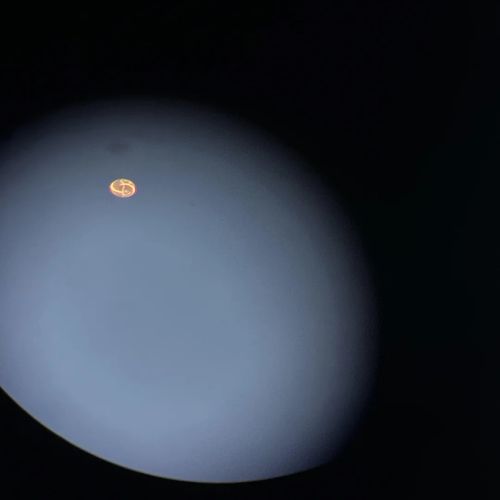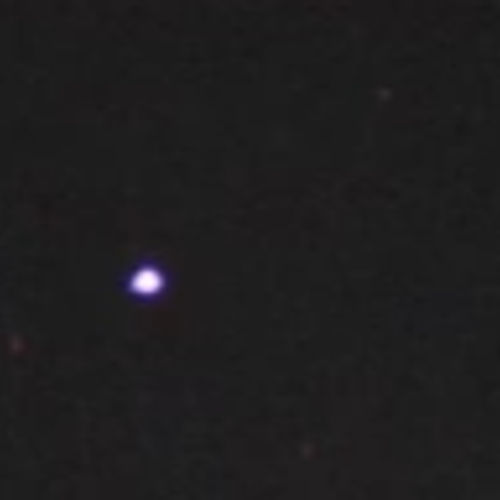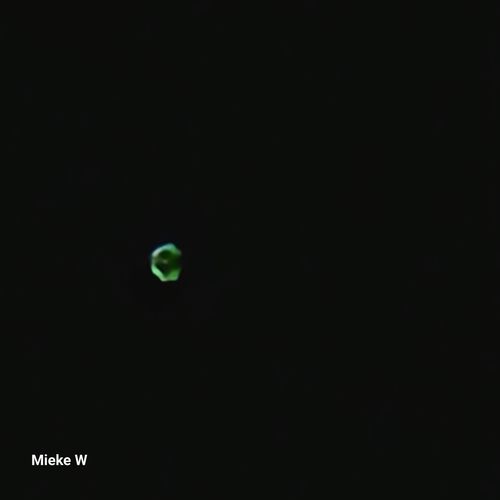| ID | #1604912755 |
| Added | Mon, 09/11/2020 |
| Author | July N. |
| Sources | |
| Phenomena | |
| Status | Investigation
|
Initial data
Late on the evening of December 30, 1978, an Argosy cargo plane took off from Wellington, New Zealand, the pilot was Captain Bill Startup (a very experienced pilot), and the co-pilot was Bob Gard. The crew of the plane was accompanied by the Australian TV channel Channel 0-10 Network. The purpose of the flight was to try to capture UFOs on film, as for several weeks UFOs were observed over the Cook Strait.
When the plane flew over the Pacific Ocean, to the northeast of the South Island, the pilots observed a strange object in the sky. They were trying to confirm their observation with radar confirmation from Wellington Air Traffic Control.
Quentin Fogarty, a TV journalist, stated that he saw a row of five bright lights that pulsed and increased from the size of a bowling pin to the size of a large balloon. Then the whole sequence was repeated, and now the lights appeared over the city Kaikoura, between the plane and the ground.
At this stage, David Crockett, the cameraman, was wearing headphones and was warned by Wellington's management that an unknown object was following Argozi - the pilot immediately turned the plane 360 degrees to find out what was behind them. The people on board the plane did not see anything, but once again the Wellington management warned them:
"Sierra Alpha Eagle, you have a target in formation... the target has increased in size."
At the same time, the crew and passengers saw lights outside the aircraft, but were unable to film them due to interference from the aircraft's navigation lights.
However, when the navigation lights were turned off, everyone on board the plane saw a large bright light that Crockett was able to catch on his "hand-held" camera. To do this, Crockett had to switch places with Bob Gard, as a result of which the shooting suffered from camera shake.
However, he managed to get 30 seconds of decent frames.
Then, at launch, the plane turned completely around again and the object was not visible, but Wellington's management claimed that its echo was still visible on radar.
When the Argosi approached Christchurch, the fuel level sensor failed, but obviously this was not necessarily something unusual, and they tuned in to a UFO off the Banks Peninsula.
The Wellington Control Center now saw the object on radar when the plane landed in Christchurch.
On December 31, at 2-15 a.m., the plane set off on a return flight, and very quickly two strange objects came into view.
Crockett observed one of the objects through his camera and described a rotating sphere with side lines around it, and one of the objects appeared on the plane's radar for four minutes.
As the plane neared the end of its flight, two pulsating flames were seen - one suddenly dropped about 1,000 feet before eventually coming to a stop in a series of sudden movements.
The presence of this object was confirmed by the Wellington Air Traffic Control authorities.
The film, shot during these two flights, was shown around the world, with the BBC giving it priority in the main evening news program.
Despite the fact that the filmed events were also obvious using ground-based radars, skeptics were taken to extremes and strangeness to explain the evidence captured on video, including boat lights, top-secret remote-controlled US aircraft, etc.
It should be noted that the Royal New Zealand Air Force was so concerned about this event that the Skyhawk jet fighters were put on full alert to intercept UFOs.
After the BBC broadcast of the film and the subsequent investigation, the Daily Telegraph (a British newspaper - noted for business and scientific observations) noted:
"A scientist who assumed that everyone (on the plane) saw Venus on a particularly bright night can be safely sent to Bedlam (madhouse)!"
_______________________________
More than forty years have passed since the observation of an unidentified flying object (UFO), which attracted the attention of the international community to Kaikoura, but those who witnessed strange phenomena still cannot understand what they saw.
Three bright lights appeared in the sky over Kaikoura in December 1978, causing confusion among those who witnessed them, including air traffic controllers John Cordy and Andy Hurd.
It was even captured on camera by an Australian film crew who were in the area and tried to capture them on film.
Journalist Quentin Fogarty said they were mesmerized by the mysterious lights, some of which were the size of a house.
"We saw a string of lights, it started as a small point of light, then grew into a large pulsating ball with shades of orange and red," he said. "I sat there as if spellbound - after we were told that it was the size of a house."
The objects even appeared on the radar, which further confused the air transport staff.
Muldoon's government said it was squid boats, moonlight reflecting off cabbages, or Venus rising-but those who were there aren't sure.
"Come on, radar signals from the cabbage field? Squid boats going 180 knots at 14,000 feet?" Mr. Cordy said.
Even Mr. Hurd, a skeptic, according to his son, believed that flashing lights were abnormal.
"My father was a very sensible man," Daniel Hurd said. "He would have to go through a lot to believe that this is something as unusual as he thought."
The mystery is further complicated by the fact that six years earlier, in 1972, other UFOs were spotted, and an American scientist who studied the lights admitted that he believes it was not a hoax... or explained as squid boats.
Declassified government documents show that officials struggled to refute TV1 footage of UFO sightings with Kaikoura lights in December 1978.
In a report submitted to the UN in January 1979, the Department of Scientific and Industrial Research (DSIR) classified these objects as "UFOs". This document is one of a large group of declassified documents on "Unidentified Flying Objects" in the New Zealand Archive, which were obtained as a result of New Zealand's work at the UN between 1977 and 1982.
Original news
The New Zealand UFO / Airplane Encounter of December, 1978
In the late hours of 30th December 1978, an Argosy freight plane left Wellington, New Zealand – the pilot was Captain Bill Startup, a very experienced flyer and the co-pilot was Bob Guard. The air crew were accompanied by an Australian T.V. unit from Channel 0-10 Network.
The purpose of the flight was to try to capture a UFO on film – for some weeks UFOs had been sighted over Cook Strait.
When the aircraft was flying over the Pacific Ocean, to the northeast of South Island, the pilots observed a strange object in the sky; they endeavoured to verify their sighting with radar confirmation at Wellington air traffic control.
Quentin Fogarty, T.V. reporter, stated that he saw a row of five bright lights which were pulsating and grew from the size of a pinpoint to that of a large balloon. The whole sequence was then repeated, the lights now appearing over the town of Kaikoura, between the aircraft and the ground.
At this stage, David Crockett, cameraman, was wearing the headphones and was warned by Wellington control that an unknown object was following the Argosy – the pilot immediately turned the plane 360 degrees in order to ascertain what had been behind them. The people aboard the aircraft saw nothing but yet once more Wellington control warned them:
“Sierra Alpha Eagle, you have a target in formation with you… target has increased in size.” At this, the crew and passengers saw lights outside of the aircraft but were unable to film them because of interference by the plane’s navigation lights.
When the navigation lights were turned off, however, everyone aboard the aircraft saw a big, bright light which Crockett was able to capture on his “hand-held” camera. In order to do this Crockett had to exchange seats with Bob Guard, causing the resultant filming to suffer from the effects of camera shake.
However, he managed to obtain 30 seconds of decent footage.
Startup then turned the plane completely around once more and the object was not visible but Wellington control maintained that its echo was still evident on radar. As the Argosy approached Christchurch, the fuel gauge went haywire but apparently this was not necessarily something unusual and they tuned in on the UFO off Banks Peninsular.
Wellington control now had the object on radar while the aircraft landed at Christchurch.
At 2-15 a.m. 31st December, the aircraft set off on a return flight and very quickly two strange objects came into view. Crockett observed one of the objects through his camera and described a spinning sphere with lateral lines around it and one of the objects appeared on the aircraft’s radar for four minutes.
As the aircraft approached the end of its flight, two pulsating lights were observed – one suddenly falling for about 1,000 feet before eventually stopping in a series of jerky movements.
The presence of this object was confirmed by Wellington air traffic control.
The resultant film taken during these two flights was shown all over the world – the BBC giving it priority on the main evening news programme.
Despite the fact that the filmed events were also evident on ground based radar, sceptics were driven to extreme and strange lengths to explain the filmed evidence, including the lights from shrimp boats, top secret U.S. remote controlled planes etc.
It should be noted that the Royal New Zealand Air Force was so concerned about the event that Skyhawk jet fighters had been put on full alert in order to intercept the UFOs.
Following the broadcasting of the film by the B.B.C. and the subsequent investigation, the Daily Telegraph (U.K. newspaper – noted for businesslike and scientific observations) remarked:
“The scientist who suggested that all (on the aircraft) were seeing Venus on a particularly bright night can be safely consigned to Bedlam (insane asylum)!
1978 UFOs Over New Zealand
From Gary Balderson
11-15-3
1978 December 20th – Blenheim Airbase, South Island, New Zealand
Blenheim Airbase sits facing Cloudy Bay and the Cook Strait on the northern tip of the South Island, New Zealand. At eleven o’clock Ian Uffindel of the New Zealand RAF reported unusual lights in the sky: one large and two smaller lights making controlled movements and flying closely together. He added that they were not aircraft. John Cordy at Wellington Air Traffic Control Center (WATCC) confirmed targets on his scopes in the area reported by Uffindel.
This was the first Radar-Visual event (RVE) in these encounters. 1978 December 21st – Cape Campbell, South Island, New Zealand
Witnesses in the Cape Campbell area (45 miles north of Kaikoura) saw lights in the sky behaving in the manner of aircraft involved in a search & rescue operation – as if helicopters were using high-powered spotlights to view the terrain beneath them. WATCC detected three unidentified targets on their radar screens, one of which moved at high speed for 60 nautical miles (nm) and was estimated at the size of a commercial airliner. It stopped abruptly and remained stationary for some time.
(01:20) Captain Vern Powell flying in the area reported to WATCC that he could see bright white lights from an unidentified craft. He likened them to landing lights of aircraft and added that an object appeared on his radar at the same location (RVE).
(03:30) Powell indicated to WATCC that he could now see a bright red light. They confirmed that a target was on their radar to the right of his aircraft at a distance of 23 nm. It paced him for a further 12 nm (RVE).
He called ATC to say that it had changed to an extremely bright light encircled with a red halo and its luminescence was still visible when it passed behind clouds.
WATCC had five strong unidentified targets on their scopes in Powell’s vicinity as he approached Christchurch. As he was coming in to land he reported a high-speed target moving at approximately 15,000km/h. It disappeared from his radar but he could still see a flashing white light (RVE).
Later that night a large white orb dramatically buzzed another plane. They could not identify it but reported the encounter to WATCC.
1978 December 30th – Christchurch, South Island, New Zealand
(23:00) A weather balloon was released from Christchurch to detect and record atmospheric conditions.
Wellington, North Island, New Zealand
Investigating the preceding encounters over the Cook Strait area, reporter Quentin Fogarty, cameraman David Crockett and his wife sound recordist Ngaire Crockett boarded an Argosy freight plane with Captain Bill Startup and Co-Pilot Robert Guard. Startup had 23 years experience and 14,000 hours flying time. Guard had 7000 hours flying time.
(23:50) The Argosy crossed the Cook Strait. Startup reported excellent weather conditions: clear with visibility over 30 nm. In fact they could see the lights of Christchurch, which was 150 miles away.
‘There is another target that just appeared on your left side at about 1 mile…’
Wellington Air Traffic Control Center
1978 December 31st – Kaikoua Coastline, South Island, New Zealand
(00:05) The pilots first noticed lights near to the Kaikoura coast. These lights projected a beam downwards and then disappeared. The number varied from none, to one, to many. The pilots noted that the strange lights were above the town of Kaikoura but between the aircraft and the ground in the one o’clock position at a distance of 13 nm. (NB – the December 21st sightings above)
(00:12) WATCC radioed confirmation of these lights as targets on their scopes. Indeed those targets had been appearing and disappearing for the past half hour. On duty that night were Air Traffic Controller Geoffrey Causer and Bryan Chalmers, a radar maintenance technician. At this point another aircraft landed at Wellington and from then onwards the Argosy was the only plane in the sky south of Wellington Airbase. Not long afterwards WATCC reported that they had another target in the aircraft’s three o’clock position but the crew could see nothing in that direction. The radar target disappeared.
(00:15) The camera crew came up to the cockpit to view the objects.
(00:16) WATCC notified them of a target in their twelve o’clock position at a distance of 10 nm. The crew confirmed – they saw a light in that direction. Startup: ‘It was white and not very brilliant and it did not change colour or flicker. To me it looked like the tail light of an aircraft. I’m not sure how long we saw this for. Probably not very long. I did not get a chance to judge its height relative to the aircraft.’ (RVE) The light disappeared and WATCC confirmed its disappearance on the next sweep of the radar but they reported a new strong target at their eleven o’clock position at a distance of 3 nm. The Argosy crew saw nothing. WATCC reported a target at nine o’clock at 2 nm. Again the crew could see nothing. Just after this they picked up a target at their ten o’clock position at a distance of 12 nm. The Captain requested permission to turn around to investigate the anomalous targets.
WATCC authorised him with the caution that: ‘there is another target that just appeared on your left side at about 1 mile… briefly and then disappearing again.’ Although the crew were still witnessing the lights near to Kaikoura, they could see nothing of the new targets reported by Wellington.
Startup put the Argosy in a turn. WATCC reported: ‘The target I mentioned a moment ago is still just about 5:00 to you, stationary.’ Once more nothing was visible to the crew in that direction. Causer had been picking up appearances and disappearances of targets on the scopes which correlated to the lights viewed by the crew close to Kaikoura.
‘There is a strong target right in formation with you. Could be right or left. Your target has doubled in size.’
Wellington Air Traffic Control Center: The Kaikoura Coastline
(00:27) With the Argosy now moving back along its flight path towards Wellington Airbase Causer reported another target in their twelve o’clock position three miles distant. Startup responded: ‘We pick it up. It’s got a flashing light.’ He reported seeing: ‘a couple of very bright blue-white lights, flashing regularly at a rapid rate. They looked like the strobe lights of a Boeing 737…’ (NB – the Argosy was the only aircraft in the area at the time) (RVE)
(00:28) The Argosy turned back towards Christchurch and WATCC reported that all the targets were now 12 – 15 nm behind them.
(00:29) WATCC notified the pilots of a target one mile behind the aircraft in their six o’clock position, which soon vanished.
(00:30) Another target appeared on the radar at 4 miles behind the plane. It vanished. Next came a target at three o’clock, again at 4 nm.
(00:31) WATCC: ‘There is a strong target right in formation with you. Could be right or left. Your target has doubled in size.’ This is known as a Double Size Target (DST). Growing increasingly worried the Copilot (Guard) looked out of the right windows and saw a light: ‘It was like the fixed navigation lights on a small airplane when one passes you at night. It was much smaller than the really big ones we had seen over Kaikoura. At regular intervals it appeared to flash, but it didn’t flash on and off; it brightened or perhaps twinkled around the edges. When it did this I could see a colour, a slight tinge of green or perhaps red. It’s very difficult describing a small light you see at night.’ (RVE) Startup checked their environment, seeing: coastal lights, and the lights of Japanese squid boats on his far left (east) horizon. He saw no running lights of boats, which implies that there were no boats in the area. When Guard reported the light out of the right hand window, Startup turned off the green navigation light on the right wing to make viewing easier. The town lights of Kaikoura were now behind the mountains and not visible. (Claims were made after this incident that the light witnessed by the crew was a beacon light on the end of the peninsula, but the witnesses testified to the light being level with the plane – ie. well above ground level). Fogarty commented: ‘I’m looking over towards the right of the aircraft and we have an object confirmed by Wellington radar. It’s been following us for quite a while. It’s about four miles away and looks like a very faint star, but then it emits a bright white and green light.’ (RVE) Startup then told WATCC: ‘Got a target at 3:00 just behind us.’ WATCC responded: ‘Roger, and going around to 4:00 at 4 miles.’
The Kaikoura Peninsula
(00:33) WATCC informed Christchurch Air Traffic Control (CATCC) that they had a target at five o’clock to the Argosy at a distance of 10 miles. CATCC could not confirm. WATCC said: ‘…not moving, not too much speed… It is moving in an easterly direction now.’
(00:35) WATCC: ‘The target you mentioned, the last one we mentioned, make it 5:00 at 4 miles previously, did you see anything?’ Startup: ‘We saw that one. It came up at 4:00, I think, around 4 miles away.’ WATCC: ‘Roger, that target is still stationary. It’s now 6:00 to you at about 15 miles and it’s been joined by two other targets.’ (RVE) (NB – Uffindel’s report from Blenheim – above)
(00:36) WATCC informed the Argosy that the three targets had now merged on their scopes. Startup requested permission to do another turn to investigate and permission was granted. Despite this brief investigation, the crew saw nothing.
(00:39) The Argosy continued on its way to Christchurch. CATCC reported to the plane that a target was pacing the aircraft to their west overland. Guard checked the window and saw a rapidly-moving light in that direction. (RVE) The Argosy went on to land at the airbase.
‘It turned with us as I changed course… It was making definite movements in relation to us’
–Captain Bill Startup
Christchurch, South Island, New Zealand
(02:00 – 03:00) Dennis Grant replaced Ngaire Crockett, who did not want to return to the area where these Ufos were flying. The Argosy took off again at 2:15am on its return journey.
Not long after take off the crew saw two more objects. David Crockett saw a sphere with lateral lines around it which was spinning. CATCC confirmed that this object was swaying continuously on their scopes for four minutes. The object moved in relation to the aircraft, suggesting intelligent control, and was estimated to be the size of a house.
The crew saw two pulsating lights, one of which suddenly descended in a blurred streak for 1000ft/300m before ascending in a series of jerky movements.
Points To Note
The Royal New Zealand Air Force put a Skyhawk jet fighter on full alert to intercept any other Ufos which might appear.
Examination of the film and computer enhancement concurs that the footage is genuine.
The radar technician, Bryan Chalmers, responsible for maintaining the radar, checked it for evidence of anomalous propogation/refractive beam bending during the sightings. These tests prove that atmospheric refraction could not account for the radar sightings.
Although a dark object against a light sky could be seen from 30 miles or more away, a light object against a dark sky could be seen from more than 100 miles.
Turbulence and atmospheric refraction could to some degree be attributed to the radar angels (unknown targets) towards the coastline. Strong reflectors of radar on the ground might appear to move around on the scope due to the strong refraction. But for this explanation to work off the coast would mean that there were numerous strong reflectors on the ocean spread out over a wide area due to the multitude of targets picked up during the Argosy’s flights, which is unlikely given that no running lights could be seen by the cabin crew. Furthermore any boats on the ocean should not have shown up on the radar scope because it has a filter which screens any such targets. The sensitivity of the radar scopes at Wellington means that Clear Air Turbulence (CAT) or birds/insects/weather would not have been detected beyond 50 nm. The Argosy was 82 nm from WATCC at the time of the DST.
Hypotheses
Контрастный объект на однородном фоне
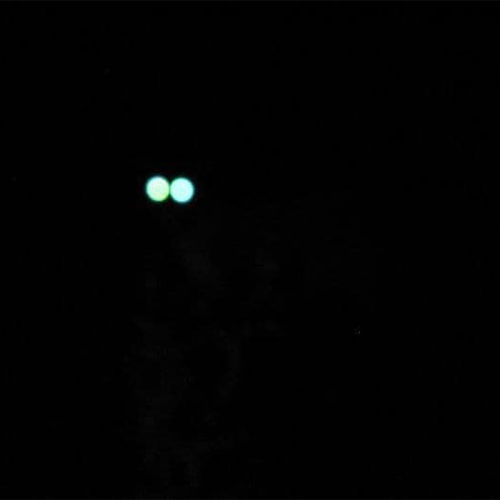
This version can refer to any observation in the contrast of an object on a solid background, both day and night.
Night it can be a light in a dark house, on the technique in a dark room, etc.
Day the color of the sky sometimes merge with the color of the surface of the Earth at the horizon level. While it may seem that the object on this piece, floating in the sky. It is clearly seen, for example, at the marine landscapes. This illusion may occur as in the photos (especially black and white) and by direct observation.
Objects and light sources out of focus
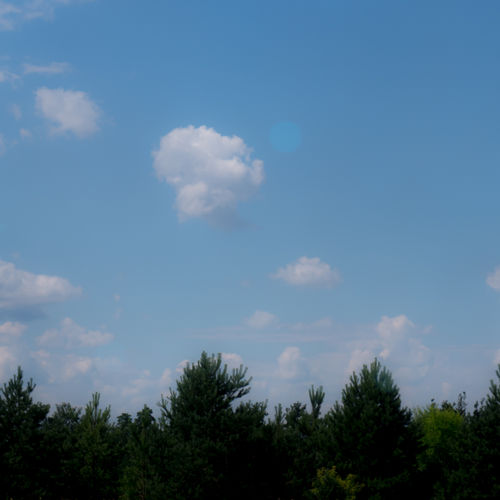
When the objects are out of focus, their silhouettes blurred and poorly recognizable. They can look like dark or colored translucent stain. This is often the cobwebs, spiders, insects in front of the camera.
Investigation
Since there are no landscape elements in the frame, it is quite difficult to determine the nature of the object's movement and estimate its relative size. We only see a blurry point of light on a dark background, which can have many versions of its origin.
Resume
Similar facts
Log in or register to post comments



